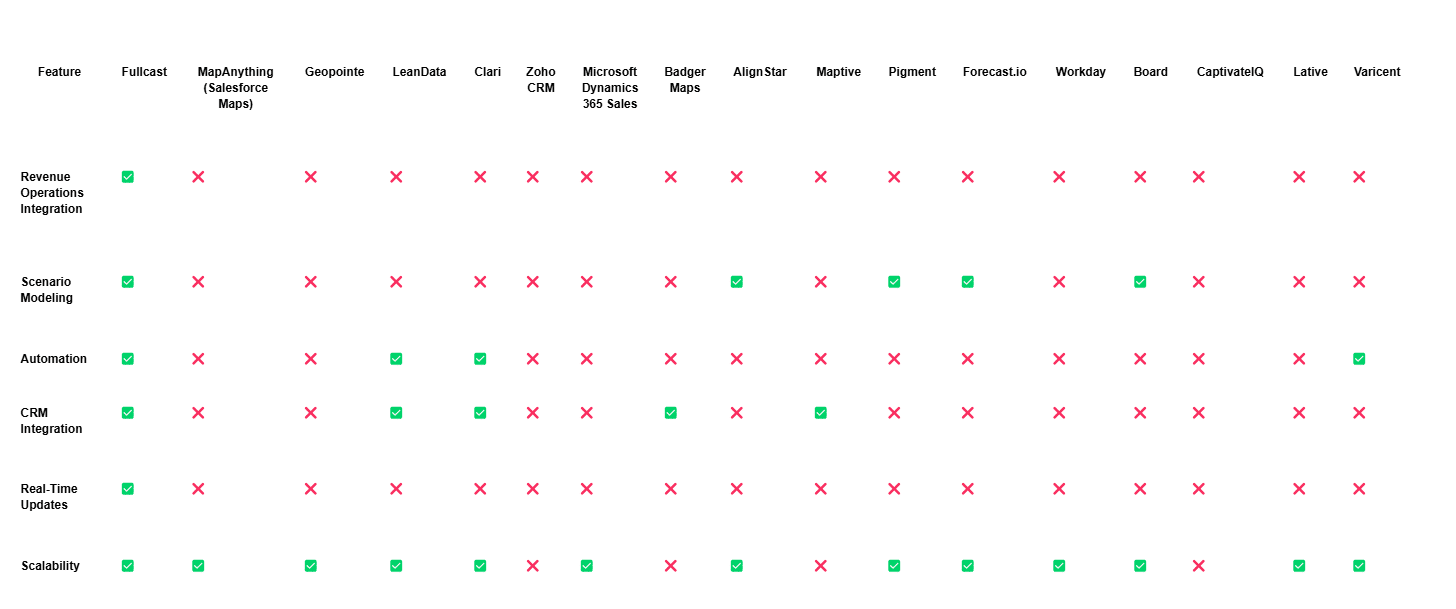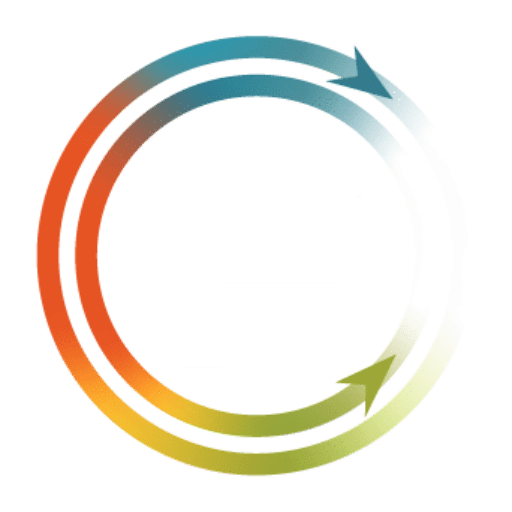Is 2025 the year for RevOps? Gartner research followed this RevOps trend with data showing 75 percent of high-growth companies plan to adopt revenue operations models by the end of this year.
The RevOps advantage is clear. For instance, aligning teams with a data-driven single source of truth can increase productivity by almost 30 percent! Simply moving RevOps to an automated, AI-aligned territory platform can improve sales performance by identifying upsell opportunities and sales productivity by 15 percent in some cases. But not all territory management platforms are the same. Any platform is only as good as the data, and if using the platform doesn’t save time for your sales reps, they won’t use it.
Meet Fullcast. A customized platform where RevOps teams can plan, execute, and track Go-to-Market strategies with scenario planning, territory and quota management, and routing—powered by SmartPlan AI, connected by Datajoin, and automated with Copilot for RevOps.
Since this is the season for making lists (and checking them twice), we asked CHATGPT to compare Fullcast’s innovative, AI-supported functionality with other popular brands based on six essential RevOps features:
-
Comprehensive Revenue Operations Integration
-
Scenario Modeling and Strategic Planning
-
Automation and Policy Enforcement
-
CRM-Agnostic and Seamless Integration
-
Enterprise-Grade Scalability
-
Real-Time Updates and Execution
Summary of Key Advantages

1. Comprehensive Revenue Operations Integration
Almost 70% of CFOs recognize that their teams need tools or processes to effectively leverage data for actionable business insights.
Fullcast combines territory management, lead routing, quota setting, and policy enforcement in one platform. Built specifically for revenue operations, it automates alignment between sales strategies and execution.
Other Platforms:
- MapAnything (Salesforce Maps), Geopointe, Badger Maps, Maptive: Focus on geospatial mapping and routing but lack comprehensive RevOps capabilities.
- LeanData, Clari: Focus on lead routing and pipeline management but don’t offer end-to-end territory management.
- Zoho, Microsoft Dynamics 365 Sales: CRM systems with limited advanced RevOps integration.
- Varicent, CaptivateIQ: Specialize in sales performance and compensation management but lack holistic territory planning.
2. Scenario Modeling and Strategic Planning
One of the primary advantages of scenario planning is to help your organization reduce risks.
Fullcast offers robust “what-if” modeling to simulate territory changes and test go-to-market strategies before implementation. It also supports dynamic adjustments for performance optimization.
Other Platforms:
- AlignStar, Maptive, Pigment, Forecast.io, Board: Provide scenario planning but primarily focus on design and visualization without real-time execution or integration with CRMs.
- Microsoft Dynamics 365, Zoho, Workday: Scenario modeling is not a core feature; it requires extensive customization.
- LeanData, Lative, CaptivateIQ: Lack strategic modeling for territory or resource allocation.
3. Automation and Policy Enforcement
Did you know sales teams can increase sales simply by automating territory planning? A landmark study found some organizations saw increases up to 7 percent.
Fullcast automates lead routing, account assignments, and policy enforcement, ensuring compliance and reducing manual errors.
Other Platforms:
- LeanData, Clari: Automate lead routing but don’t provide policy enforcement for broader sales operations.
- Zoho, Microsoft Dynamics 365 Sales, Salesforce Maps: Limited automation for sales policies; often require manual intervention or external configurations.
- Varicent, CaptivateIQ: Focus on compensation automation, not operational policies.
4. CRM-Agnostic and Seamless Integration
Seamless alignment among organizations using RevOps models for their digital marketing initiatives increased ROI as much as 200 percent.
Fullcast works across multiple CRMs, such as Hubspot and Salesforce, to ensure flexibility for organizations with diverse tech stacks.
Other Platforms:
- Salesforce Maps, Geopointe: Exclusively tied to Salesforce.
- Zoho, Microsoft Dynamics 365 Sales: Locked into their own CRM ecosystems.
- Pigment, Forecast.io, Board: Focus on planning and analytics; lack CRM integration.
- Badger Maps, Maptive: Limited CRM integrations.
5. Real-Time Updates and Execution
Research shows that using real-time data can boost sales productivity up to 34 percent and almost a 30 percent increase in overall sales.
Fullcast syncs territories and policies with CRMs in real-time, ensuring immediate implementation of changes.
Other Platforms:
- AlignStar, Pigment, Forecast.io: Focus on upfront planning; lack real-time execution capabilities.
- Workday, Board: Offer analytics but lack tools for real-time sales execution alignment.
6. Enterprise-Grade Scalability
Fullcast is designed for large-scale enterprises, capable of handling complex hierarchies, multi-region territories, and dynamic rule enforcement.
Other Platforms:
- Badger Maps, Maptive: Best for small-to-medium-sized businesses or field sales teams; not enterprise-grade.
- Lative, LeanData, Clari: Scalable for lead management but lacks comprehensive RevOps features for large organizations.
Why Choose Fullcast?
- Comprehensive RevOps: Combines territory planning with lead routing, policy enforcement, and execution in a single platform.
- Flexibility: CRM-agnostic, integrates seamlessly with existing tech stacks, and scales for enterprise needs.
- Real-Time Alignment: Keeps territories and policies continuously updated and aligned with sales strategies.
- Automation First: Reduces manual effort, enforces compliance, and optimizes resource allocation.
ChatGPT shows how Fullcast stands out as a superior solution for organizations prioritizing comprehensive, scalable, and automated revenue operations integrated with strategic territory management. We agree. Have questions? We’ll show you how Fullcast functionality can strengthen your GTM strategies.




















